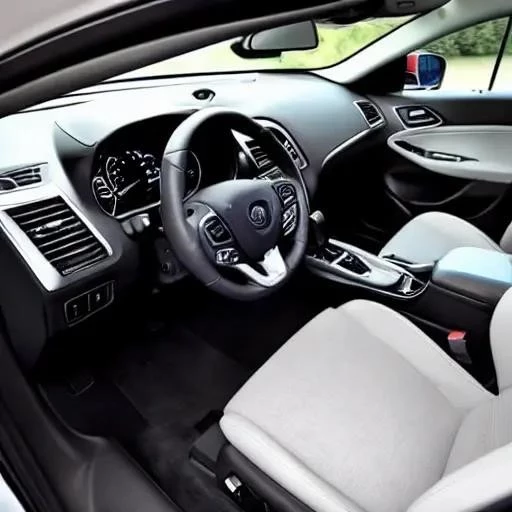In an automotive landscape increasingly dominated by autonomous features and lightning-fast automatic transmissions, the humble manual gearbox has long been whispered about as a relic, a charming anachronism destined for the history books․ Much like the melancholic fade of film cameras succumbing to digital’s undeniable convenience, the stick shift’s demise has felt, to many, utterly inevitable․ Yet, a fascinating and undeniably potent counter-narrative is emerging, suggesting that reports of its death have been, to paraphrase a famous quote, greatly exaggerated․ For a passionate cohort of drivers, the manual isn’t just surviving; it’s thriving, offering an unparalleled connection to the road that no amount of technological wizardry can truly replicate․
Indeed, while overall sales figures for manual transmission cars have seen a noticeable dip—a reported 16 percent decline compared to 2022, with many manufacturers waving goodbye to the option—2024 has paradoxically revealed a vibrant, albeit specialized, resurgence․ This isn’t a broad market phenomenon, but rather a powerful testament to the enduring allure of driver engagement, particularly within the performance and enthusiast segments․ By integrating insights from market trends and fervent community demand, leading automakers are discovering that the manual isn’t merely a nostalgic throwback; it’s a strategically valuable differentiator, offering a visceral driving experience that modern automatics, for all their efficiency and speed, simply cannot match․ This shift in perception signals a promising future for those who still crave the direct, mechanical dialogue between human and machine․
| Aspect | Details & Relevance in 2024 |
|---|---|
| Market Trend | While overall market share continues to decline, manual transmissions maintain a strong, dedicated presence in specific niche segments, particularly performance and enthusiast vehicles․ Manual sales saw a 16% decline compared to 2022, but the passion remains unwavering․ |
| Primary Segments | Predominantly found in high-performance sports cars, hot hatches, and select entry-level enthusiast models․ Examples include the Honda Civic Type R, BMW M2/M4, Toyota GR Corolla/Yaris, and Acura Integra Type S․ |
| Key Benefits | Offers enhanced driver engagement, superior control, a more immersive and “purist” driving experience, and often a stronger sense of connection to the vehicle’s mechanics․ |
| Challenges Faced | Lower fuel efficiency in some applications, slower shift times compared to advanced automatics, decreased availability across mainstream models, and a smaller pool of drivers proficient in their use․ |
| Future Outlook | Projected to remain a cherished, albeit niche, option․ Manufacturers are increasingly catering to this dedicated enthusiast base, potentially exploring integration with hybrid powertrains to maintain relevance in an electrified future․ |
| Reference Link | Car and Driver: Every Manual Transmission Car (and Truck) You Can Still Buy in 2024 |
Delving deeper, the landscape of 2024 reveals a captivating dichotomy․ While many mainstream sedans and SUVs have long abandoned the third pedal, the manual gearbox is not only surviving but, in some cases, experiencing a surprising renaissance within the high-performance realm․ Take, for instance, the universally acclaimed 2024 Honda Civic Type R, a vehicle frequently lauded as the pinnacle of hot hatch engineering, where its phenomenal manual transmission is a cornerstone of its dynamic prowess․ Similarly, BMW, a brand synonymous with driving pleasure, has remarkably brought the stick shift back to the Z4 for 2024 and continues to offer it in its M2, M3, and M4 models, clearly acknowledging the ardent desires of its purist clientele․ These are not concessions; they are strategic decisions recognizing that genuine driver involvement remains a powerful selling point․
This enduring appeal transcends mere nostalgia; it’s about a profound, tactile connection․ Expert opinions within the automotive industry often underscore that for many enthusiasts, driving isn’t just about getting from point A to point B efficiently; it’s an art form, a dance between driver and machine․ The manual transmission offers that intimate control, allowing the driver to dictate every gear change, to perfectly rev-match downshifts, and to feel the raw mechanical feedback that an automatic, however sophisticated, inevitably filters; From the relatively accessible Kia Forte GT to the ultra-exclusive Nilu27 V12 Hypercar, which proudly boasts a seven-speed manual transmission alongside its staggering 1,070 horsepower, the spectrum of manual offerings in 2024 remarkably underscores its diverse and persistent demand among those who truly love to drive․
The future, while undoubtedly moving towards electrification and increasing automation, isn’t necessarily a barren wasteland for manual purists․ Instead, it promises an intriguing evolution․ As industry leaders grapple with challenges like geoeconomic fragmentation and the complexities of the green transition, the manual transmission car could very well carve out an even more defined niche—a sanctuary of driver engagement in an ever-more automated world․ We might even see innovative integrations, such as manual gearboxes paired with hybrid powertrains, offering a best-of-both-worlds scenario: eco-conscious performance with uncompromised driver feel․ This forward-looking perspective suggests that the manual, far from being an endangered species, is adapting, evolving, and preparing to thrill generations of drivers who understand that true connection is always worth preserving․






